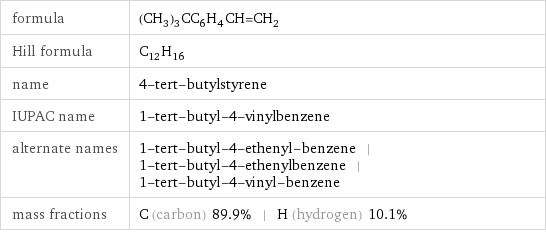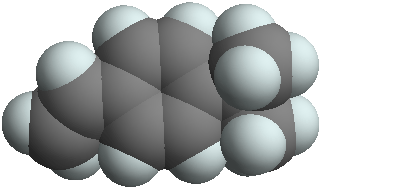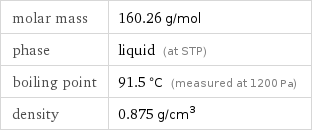Input interpretation

4-tert-butylstyrene
Chemical names and formulas

formula | (CH_3)_3CC_6H_4CH=CH_2 Hill formula | C_12H_16 name | 4-tert-butylstyrene IUPAC name | 1-tert-butyl-4-vinylbenzene alternate names | 1-tert-butyl-4-ethenyl-benzene | 1-tert-butyl-4-ethenylbenzene | 1-tert-butyl-4-vinyl-benzene mass fractions | C (carbon) 89.9% | H (hydrogen) 10.1%
Lewis structure

Draw the Lewis structure of 4-tert-butylstyrene. Start by drawing the overall structure of the molecule, ignoring potential double and triple bonds: Count the total valence electrons of the carbon (n_C, val = 4) and hydrogen (n_H, val = 1) atoms: 12 n_C, val + 16 n_H, val = 64 Calculate the number of electrons needed to completely fill the valence shells for carbon (n_C, full = 8) and hydrogen (n_H, full = 2): 12 n_C, full + 16 n_H, full = 128 Subtracting these two numbers shows that 128 - 64 = 64 bonding electrons are needed. Each bond has two electrons, so in addition to the 28 bonds already present in the diagram add 4 bonds. To minimize formal charge carbon wants 4 bonds. Identify the atoms that want additional bonds and the number of electrons remaining on each atom: Fill in the 4 bonds by pairing electrons between adjacent highlighted atoms. Note that the six atom ring is aromatic, so that the single and double bonds may be rearranged: Answer: | |
3D structure

3D structure
Basic properties

molar mass | 160.26 g/mol phase | liquid (at STP) boiling point | 91.5 °C (measured at 1200 Pa) density | 0.875 g/cm^3
Units

Liquid properties (at STP)

density | 0.875 g/cm^3 refractive index | 1.526
Units

Chemical identifiers

CAS number | 1746-23-2 PubChem CID number | 15627 PubChem SID number | 24874381 SMILES identifier | CC(C)(C)C1=CC=C(C=C1)C=C InChI identifier | InChI=1/C12H16/c1-5-10-6-8-11(9-7-10)12(2, 3)4/h5-9H, 1H2, 2-4H3 MDL number | MFCD00065126
Safety properties

flash point | 82.78 °C